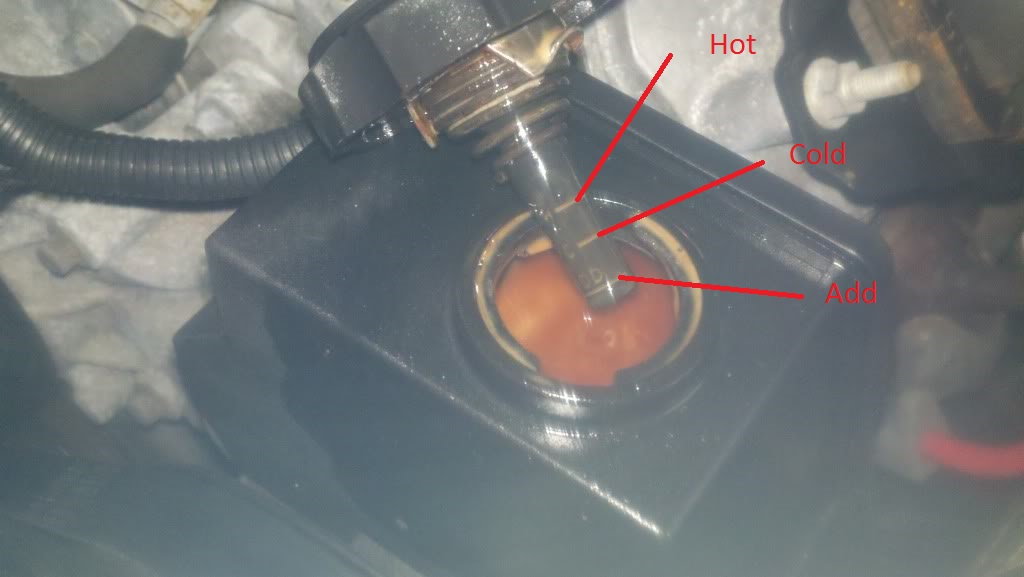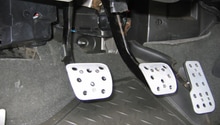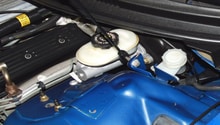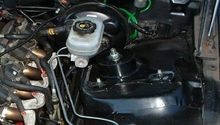Camaro and Firebird: How to Change Power Steering Fluid
The power steering system uses fluid pressure to aid the driver in turning the wheels. If the fluid is old and dirty, or the system starts to go bad, you'll need a lot more strength to hustle through those corners.
This article applies to the Chevrolet Camaro and Pontiac Firebird (1993-2002).
The power steering pump rotates at engine speed, and sends fluid into the steering rack, helping you turn the wheels to the right or left as you steer. Power steering fluid must be periodically checked and replaced like any oil to ensure a long service life from the system. A low fluid level can cause damage to the pump, and dirty fluid can damage the seals inside the system and make them leak. If you notice increased steering effort during high performance driving (or even parking), or excessive noise from the pump, it's time to correct the fluid level and/or flush the system. Once you spot a leak, it's too late, but you are going to have to change the fluid anyway in order to fix it.

Materials Needed
- Needle nose or channel lock pliers
- Vice clamp pliers
- Drain pan
- Vacuum cap
- 5 quarts of GM power steering fluid
- Rubber gloves
- Safety glasses
The steps below cover how to flush your power steering fluid with no special tools. If you have a pump with vacuum, it can be used to remove most of the fluid without starting the engine. Attachments are available to connect the vacuum pump to the power steering reservoir at the reservoir cap. If you do not have this attachment, you can remove the power steering pump reservoir return line (Step 1) and attach your vacuum pump hose to it.
Step 1 – Remove power steering pump reservoir return line
Remove the reservoir return line by pinching the spring clamp with pliers and wiggling to pull the line off. Install a vacuum cap onto the open port with the squeeze clamp so the fluid left in the reservoir doesn't leak out.

Step 2 – Flush the system
Place the return line into a drain pan or gallon jug so power steering fluid doesn't get all over the place. You may need a small clamp or a pair of vice grips to hold the line. This step requires an assistant for at least a few minutes and several quarts of power steering fluid.
- Fill the reservoir with clean fluid, and stand ready next to the pump to refill it.
- Have your assistant start the engine.
- Have the assistant turn the wheel to the left and right, as you top off the fluid as needed.
- Try to keep the fluid level near full during the flush.
- While flushing, turn the wheel to the right and left several rotations.
- Turn the engine off once the fluid flowing into the drain pan looks clean.
Step 3 – Re-install return hose and bleed the system
Reattach the hose onto the reservoir with the squeeze clamp and top off the fluid level using the dipstick on the cap. The top line indicates the correct fluid level when hot, while the middle line indicates the correct fluid level when cold. Make sure to fill it at least to the "cold" line. If your fluid level is to high, use a turkey baster or transfer pump to remove the excess fluid.
If your steering wheel feels unresponsive, you may have to bleed the system. Raise and support the front wheels slightly off the ground with the engine running, turn the steering wheel slowly all the way to each side, lock-to-lock several times. Do not hold the steering wheel against the lock or damage to the system may result. Lower the front wheels and re-check the fluid level.

Related Discussions
- How to Flush Power Steering on Camaro - LS1Tech.com
- Best Power Steering Fluid - LS1Tech.com
- Help, Bad Power Steering Leak - LS1Tech.com






